| Informational Websites | ChronoMaddox -- the legacy of Chuck Maddox | OnTheDash -- vintage Heuer website | Zowie -- Omega information |
| Discussion Forums | ChronoMaddox Forum | Heuer Forum | Omega Forum |
| Counterfeit Watchers | ChronoTools Forum | ChronoTrader Forum |
|
|
The largest independent, non-commercial, consumer-oriented resource on the Internet for owners, collectors and enthusiasts of fine wristwatches. Online since 1998. | |||||||
|
||||||||
|
||||||||
 |
Vintage Heuer Discussion Forum
The place for discussing 1930-1985 Heuer wristwatches, chronographs and dash-mounted timepieces. Online since May 2003. | ||||||
| |||||||
| |||||||
We are three days into 2016, and I am thrilled to see this posting!!
Huge thanks for this labor of love!!
Jeff
+++++++++++++++++++++++++++
: Hi all,
: Taking advantage of the Xmas holidays I thought to prepare this
: post, that is the ideal prosecution of the two previous posts
: about “How to disassemble a Chronomatic movement”:
: http://chronocentric.com/forums/heuer/index.cgi?md=read;id=79646
: and “How to clean a Chronomatic movement (part 2)” (quite
: trivial and generic and valid for all types of movements):
: http://chronocentric.com/forums/heuer/index.cgi?md=read;id=79689
: In the first post we saw that usually is not necessary to
: disassemble the chrono module to service it (this is also stated
: into the service manual, see pag.14), you can put it directly
: into the ultrasonic bath and, after having carefully dried it
: (to avoid the trapped water may rusts some parts) you will only
: need to dismount the two bridges and eventually a couple of
: screws to reach some points to be oiled (as we will see in this
: post).
: However this time we will see how to reassemble, step by step, the
: chrono module just for sake of information (can happen you have
: to partially dismount it, e.g. to replace some broken / rusted
: parts) and to ideally conclude the first post, so will see in
: details all the steps described in the following four pages of
: the service manual (you can find it on OTD too or on the Chuck
: Maddox website):
:
: 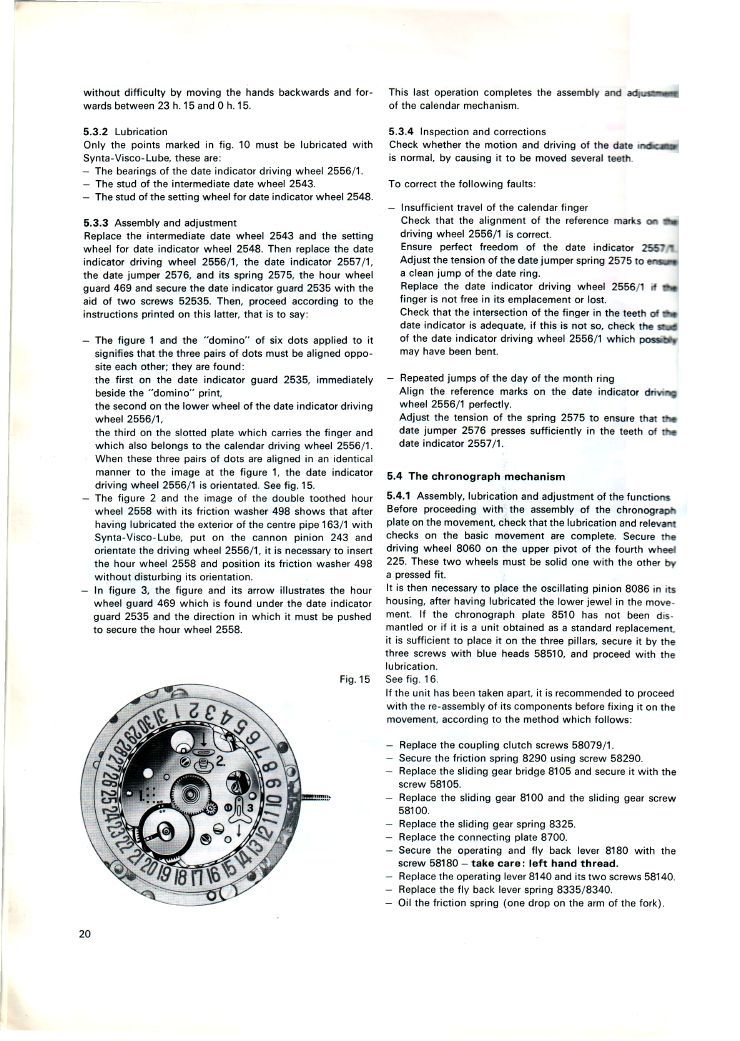
:
: 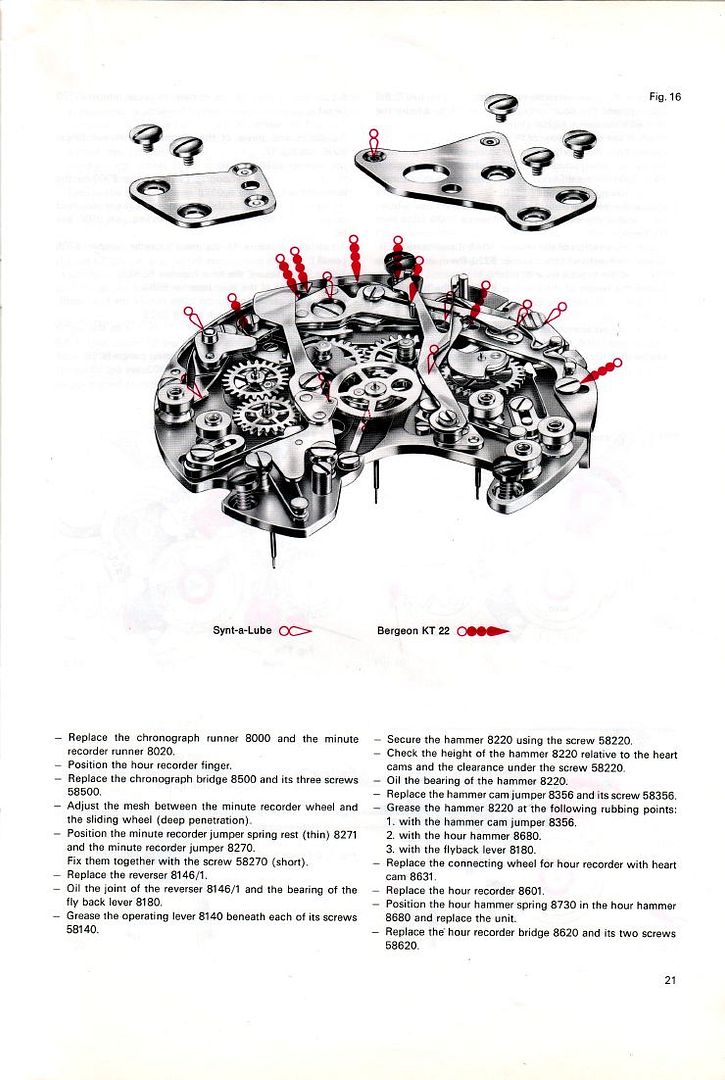
:
: 
:
: 
: I will only make three important assumptions, that are:
: a) the chronograph module, before servicing, is working well and
: doesn’t need any regulation: in fact, into this module, there
: are some eccentric screws that is essential NOT to touch unless
: you need it (e.g to regulate the penetration of the oscillating
: pinion 8086 into the central chrono wheel 8000), otherwise you
: risk to deregulate one or more of the functions of the
: chronograph.
: b) we will not explain the techniques involved in the art of oiling
: a watch (this would deserve an apposite post) so I will make the
: assumption that the reader knows how to oil / grease a watch and
: the differences involved among the various oils and greases
: needed.
: c) All the parts of the chronograph module have already been
: dismounted and cleaned, so we are ready to reassemble it.
: Banally to dismount it you can follow the following steps
: bottom-up, obviously avoiding the oiling notes :-).
: To service the chronograph module (its code is 8510 if fully
: mounted or 8281 for the base plate) only two lubricants are
: needed:
: a) Synt-a-Lube: this is a thin oil, suitable for the pivot holes of
: “fast moving” wheels (e.g. the balance wheel’s jewels 324
: and 325 of the main module, the oscillating pinion 8086) or
: wheels with very low pressure (all the chronograph module’s
: ones). I use the Moebius 9010.
:
: 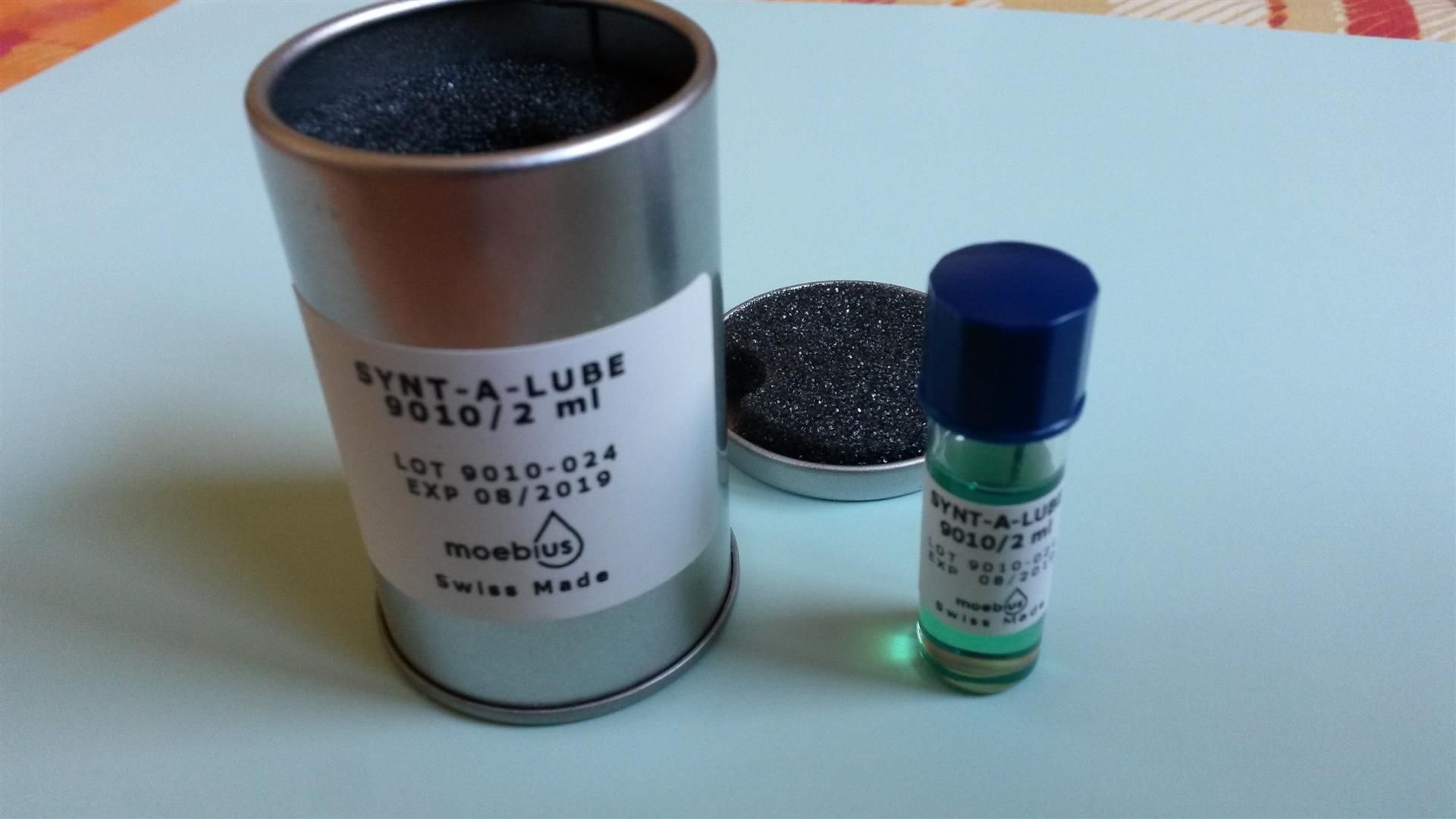
: b) Bergeon KT22: this is a grease (not an oil) and is used in the
: manual winding mechanism (here the wheels haven’t shafts but
: are similar to washers, so have a large surface to be lubricated
: but are relatively slow with an high load to sustain to wind the
: mainspring), in the setting mechanism, and in many points of the
: chronograph module where parts rubs one each other. I use the
: Bergeon KT22 but Moebius 8200 should be the same.
:
: 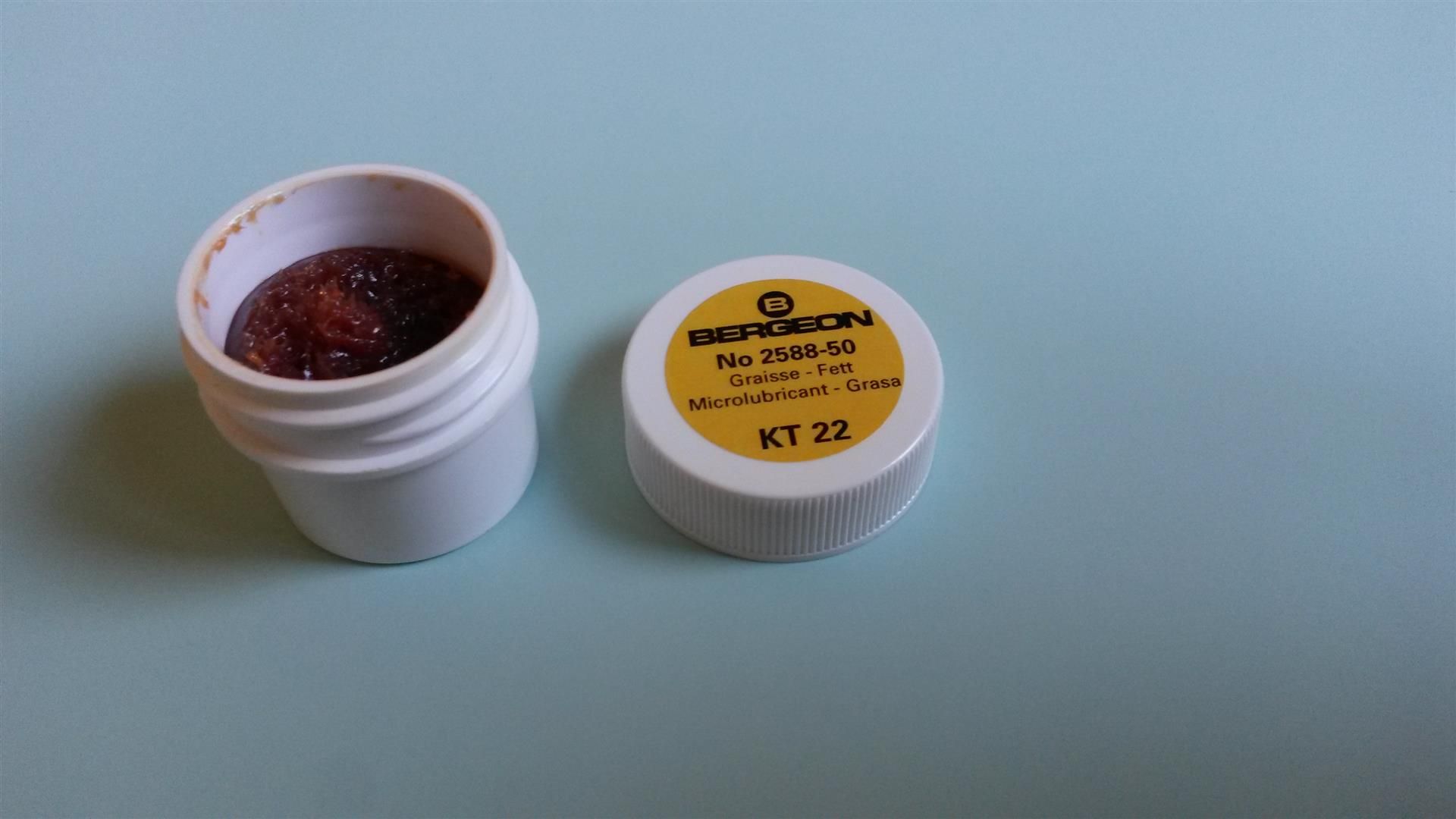
: The following image is taken from the service manual and illustrate
: the “lubrication plan” of the chronograph module (that is
: “which oil or grease to put where”).
: Obviously the oil or grease must be applied during the reassembling
: process of the parts in the points specified into the image.
:
: 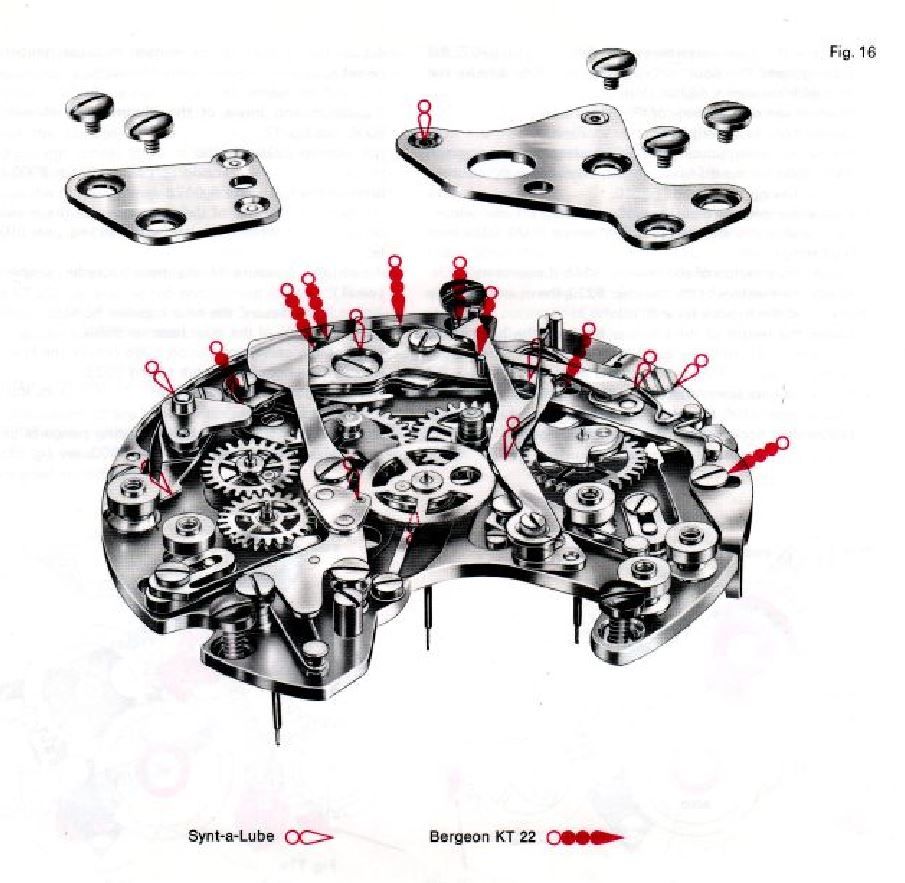
: Let’s start.
: This is the naked 8281 chronograph plate, already fitted with
: bushes and regulating screws (into the Cal12/14/15 the latter
: are usually gold coloured while into the Cal11/11i are nickel
: coloured but there are some Cal12 with nickel coloured
: eccentrics too):
:
: 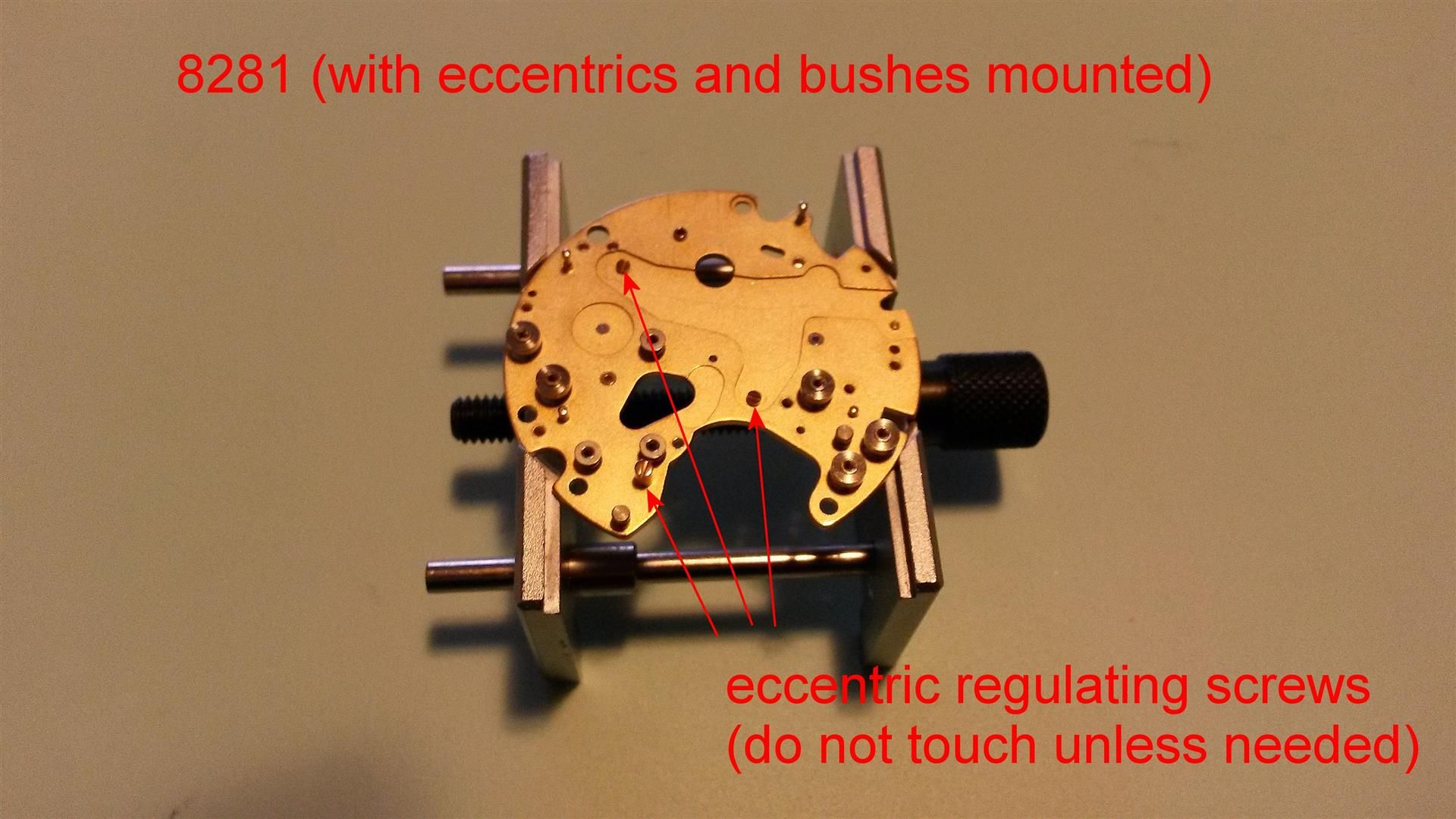
: 1) Replace the two coupling clutch screws 58079/1:
:
: 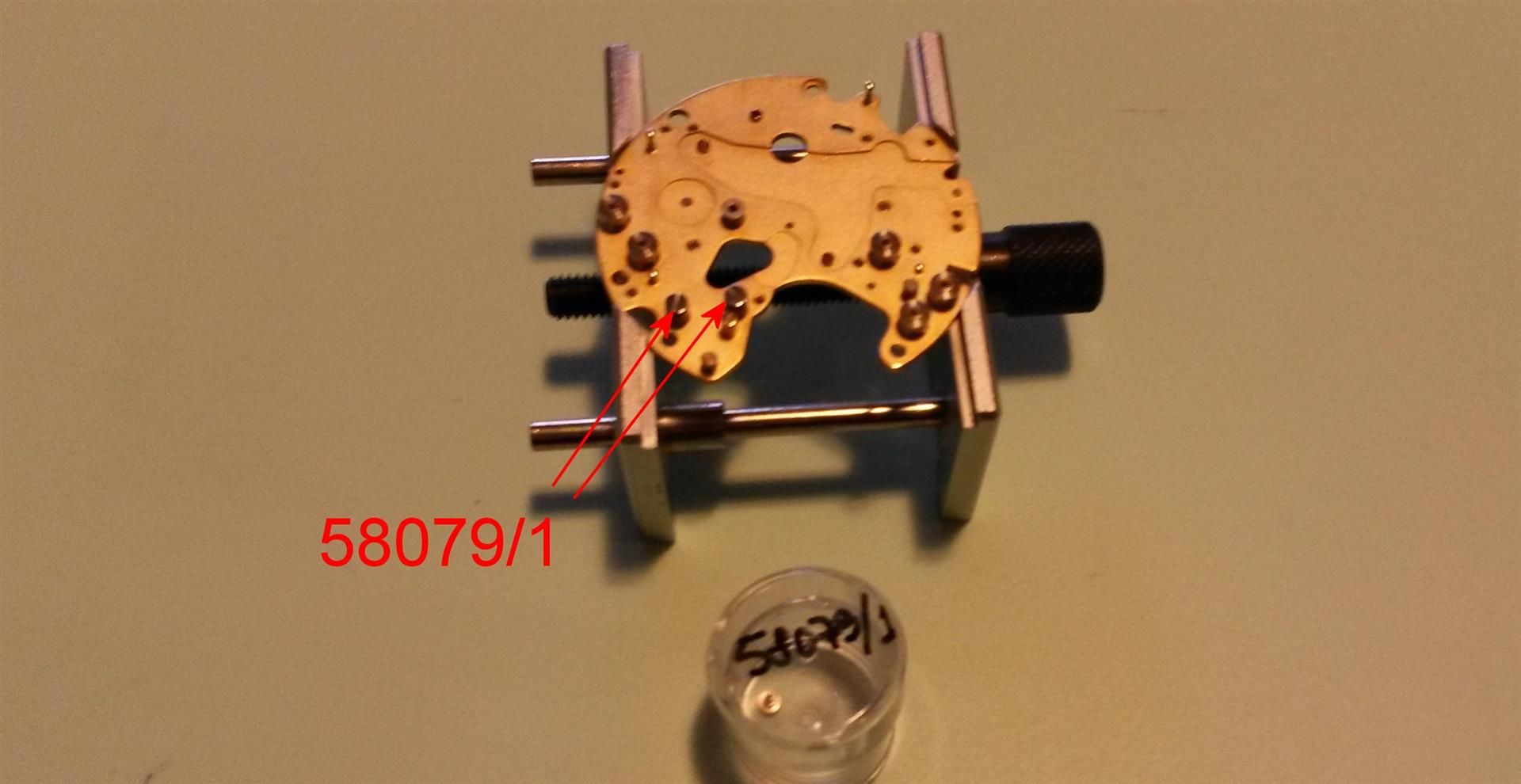
: 2) Secure the friction spring 8290 using its screw 58290:
:
: 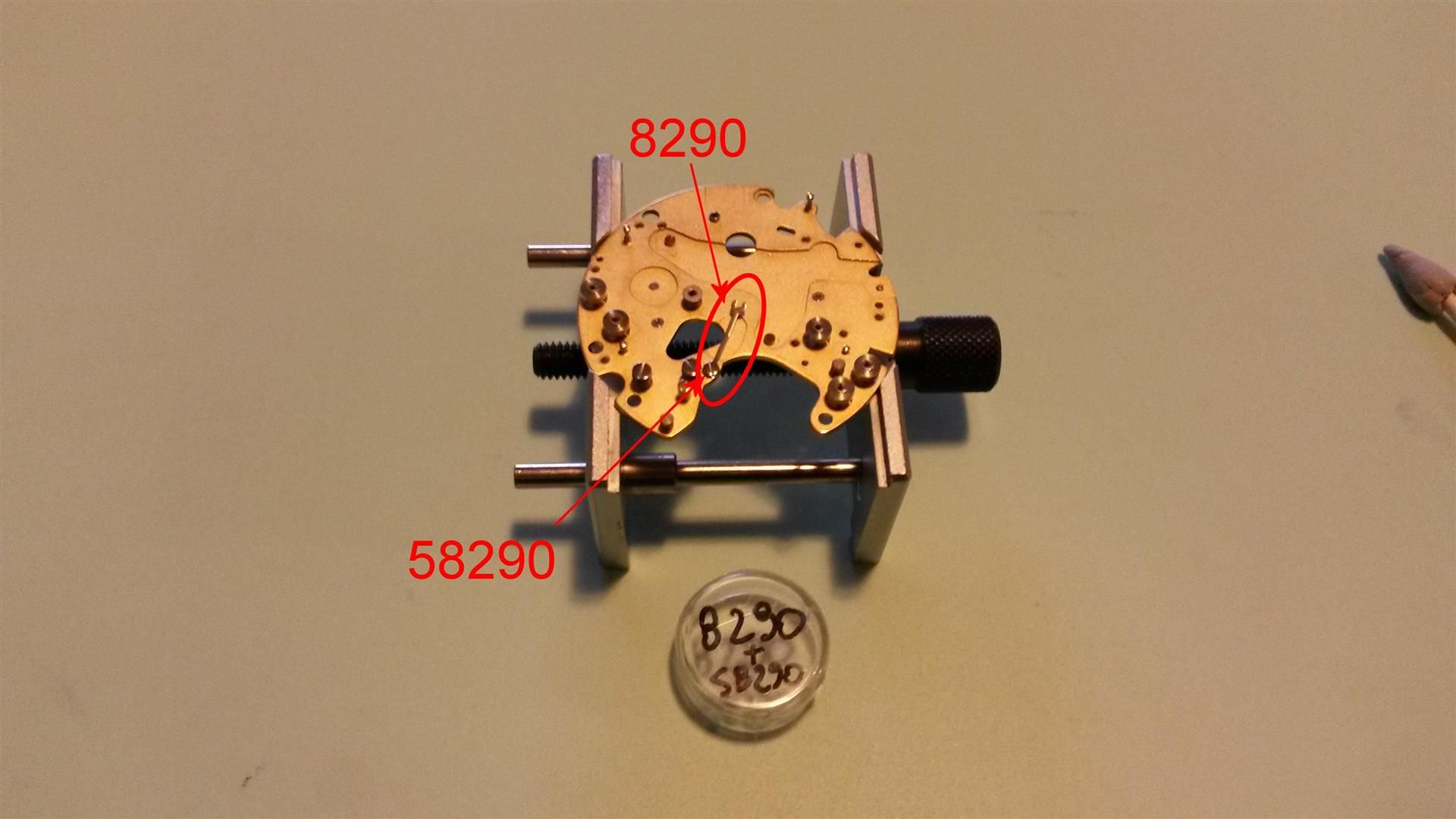
: 3) Replace the sliding gear bridge 8105 and secure it with the
: screw 58105:
:
: 
: 4) Replace the sliding gear 8100 and secure it with its sliding
: gear screw 58100:
:
: 
: 5) Replace the sliding gear spring 8325:
:
: 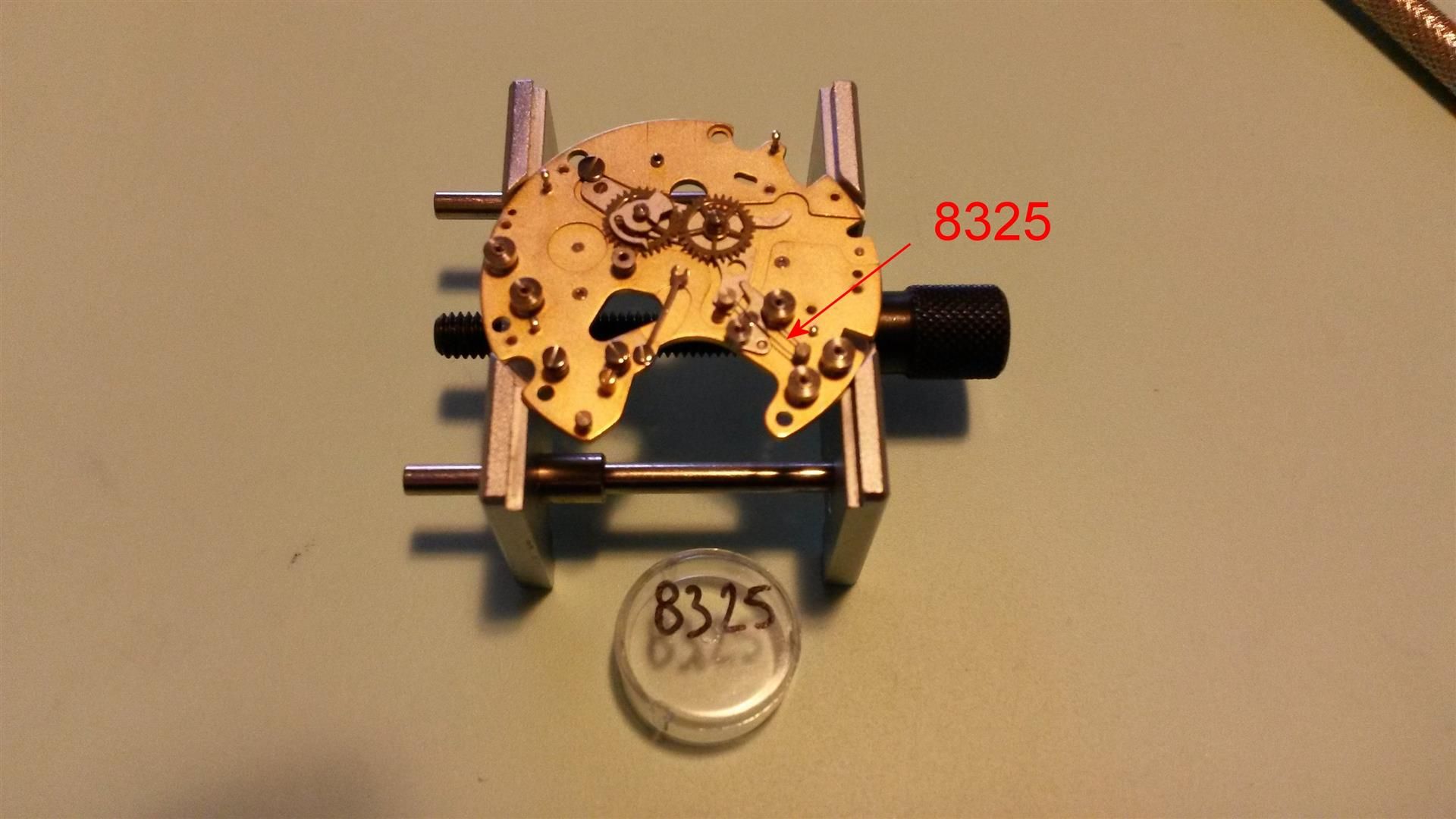
: 6) Replace the connecting plate 8700:
:
: 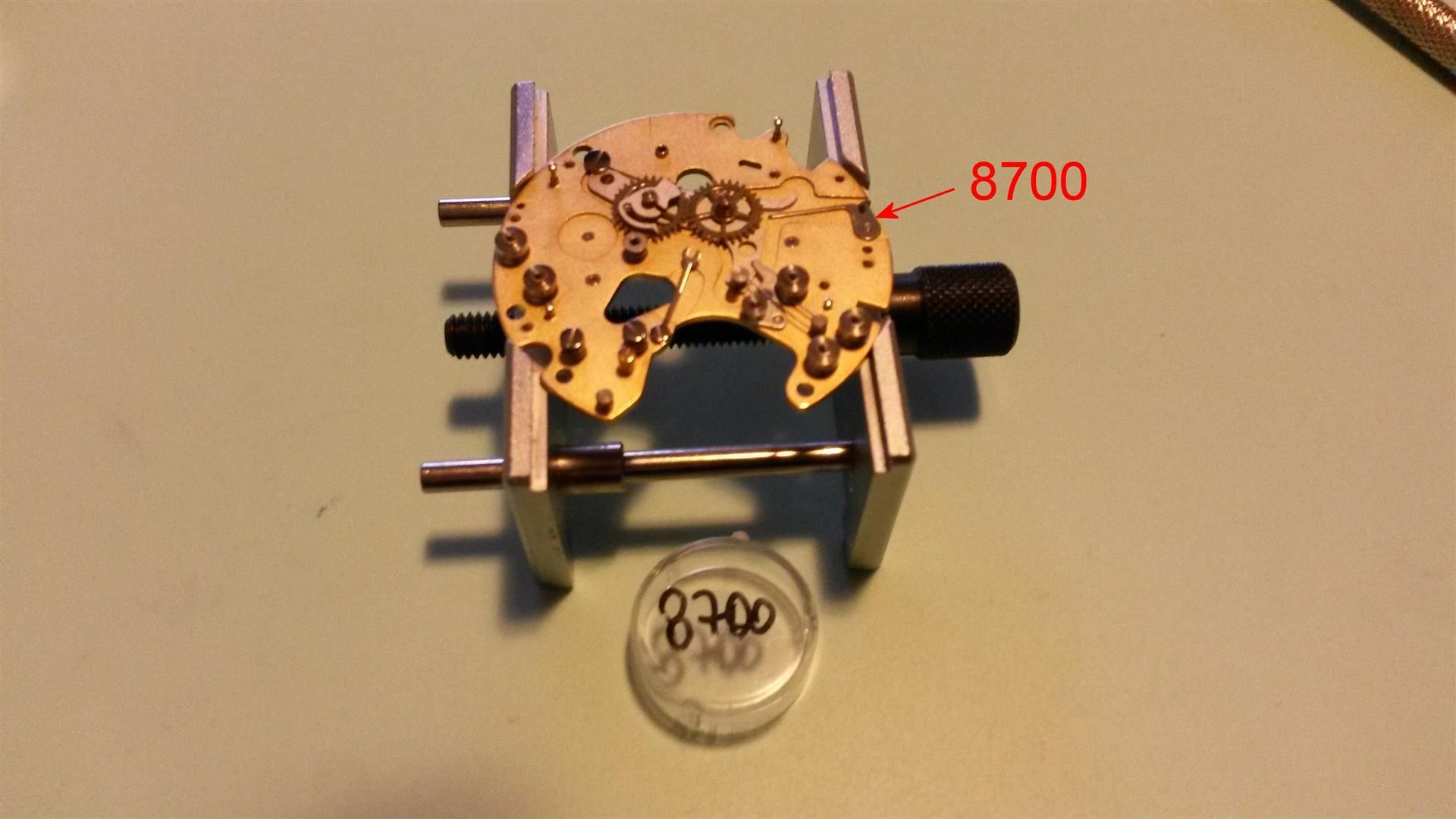
: 7) Secure the operating and fly-back lever 8180 with the screw
: 58180 (take care: is a left-hand screw!!!):
:
: 
: 8) Replace the operating lever 8140 and its two screws 58140:
:
: 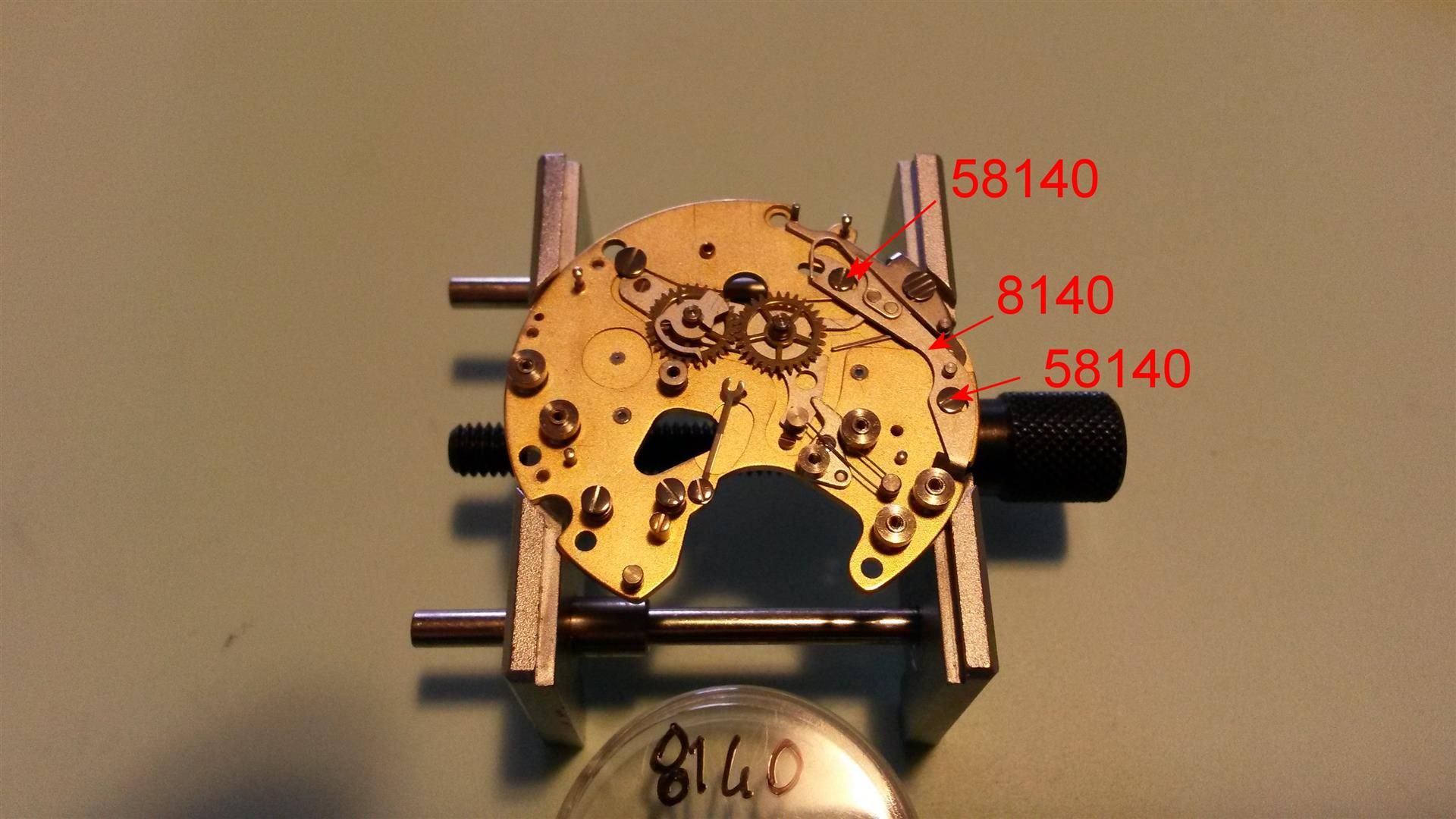
: 9) Replace the fly-back lever spring 8335/8340, then oil with
: Moebius 9010 the friction spring (one drop on the arm of the
: fork):
:
: 
: 10) Replace the chronograph runner 8000 and the minute recording
: runner 8020:
:
: 
: 11) Replace the chronograph bridge 8500 with its three screws 58500
: (bear in mind that, at the end of the reassembling, we will have
: to dismount it again to add a lever, so don’t tighten the
: screws):
:
: 
: 12) Position the minute recorder jumper spring rest 8271 (is the
: thinner one) and the minute recorder jumper 8270, then fix them
: together with the screw 58270 (sorry for the ugly image, is
: partially hidden):
:
: 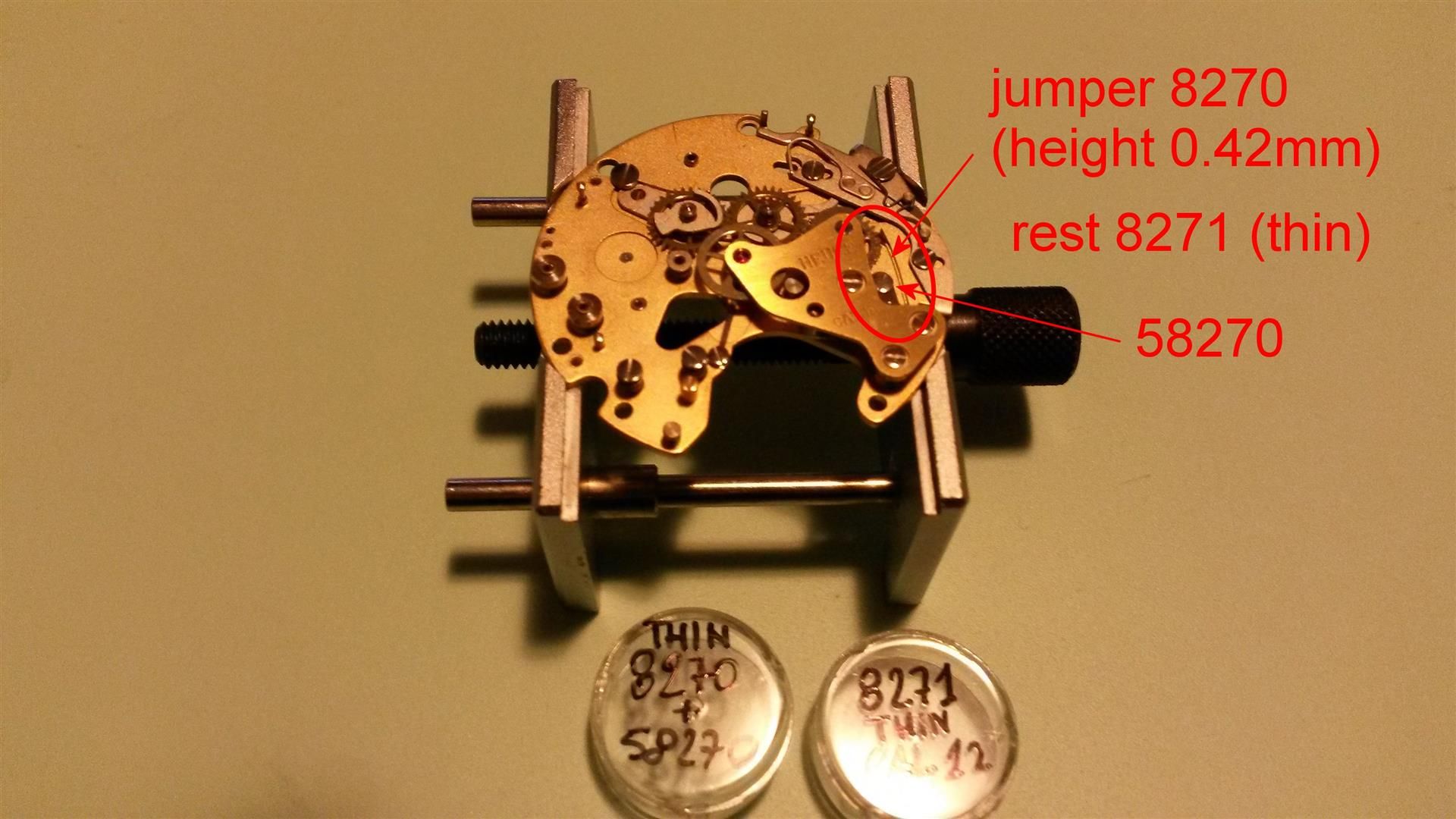
: 13) Replace the reverser 8146/1, then oil with 9010 the joint of
: the reverser (it partially rotates during the start/stop pusher
: action so needs low friction) and oil the bearing of the
: fly-back lever 8180 with 9010 and the contact point with the
: spring 8335/8340:
:
: 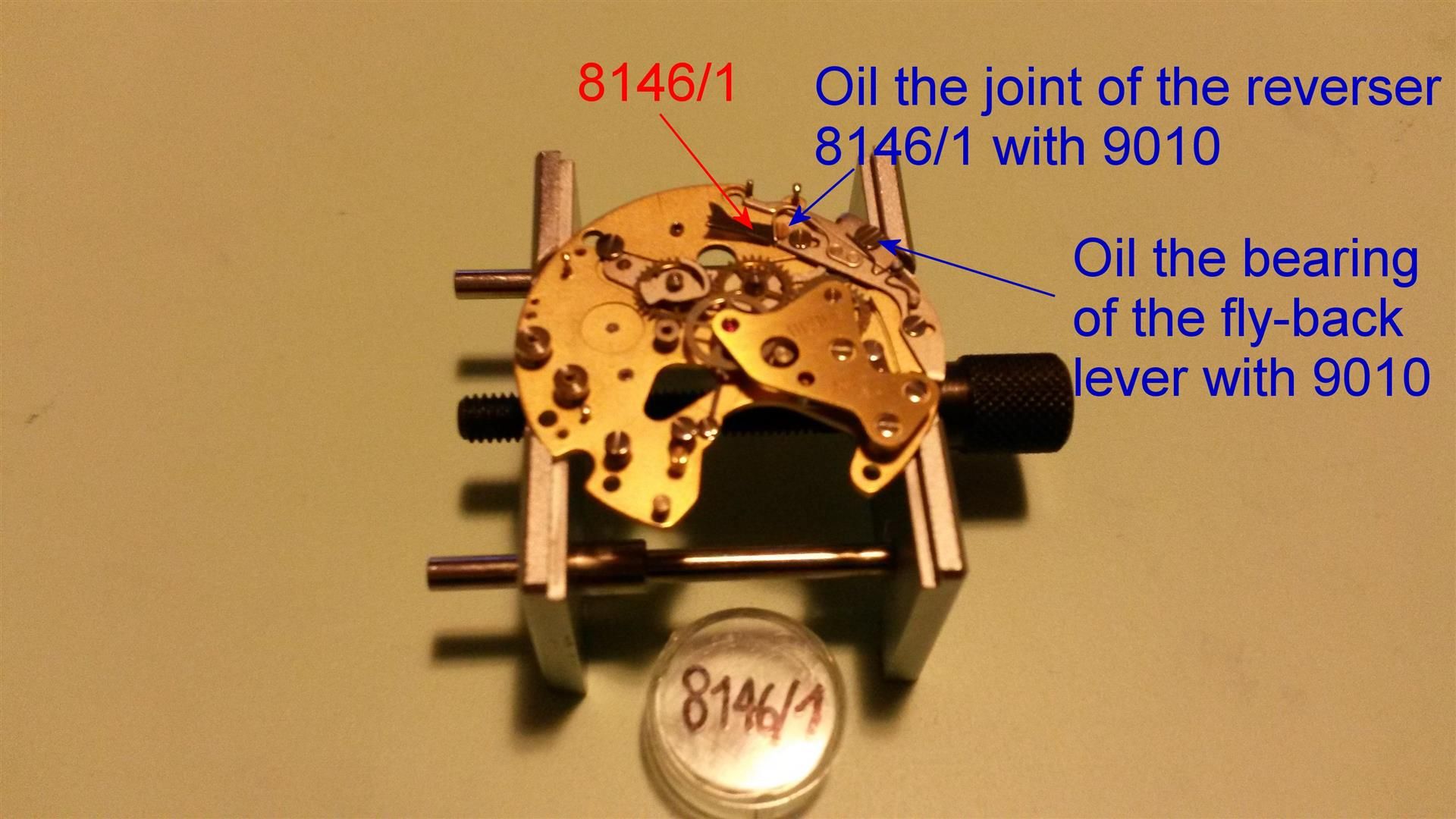
: 14) Replace the hammer cam jumper 8356 fixing it with its screw
: 58356, then grease with KT22 the operating lever 8140 beneath
: each of its screws 58140:
:
: 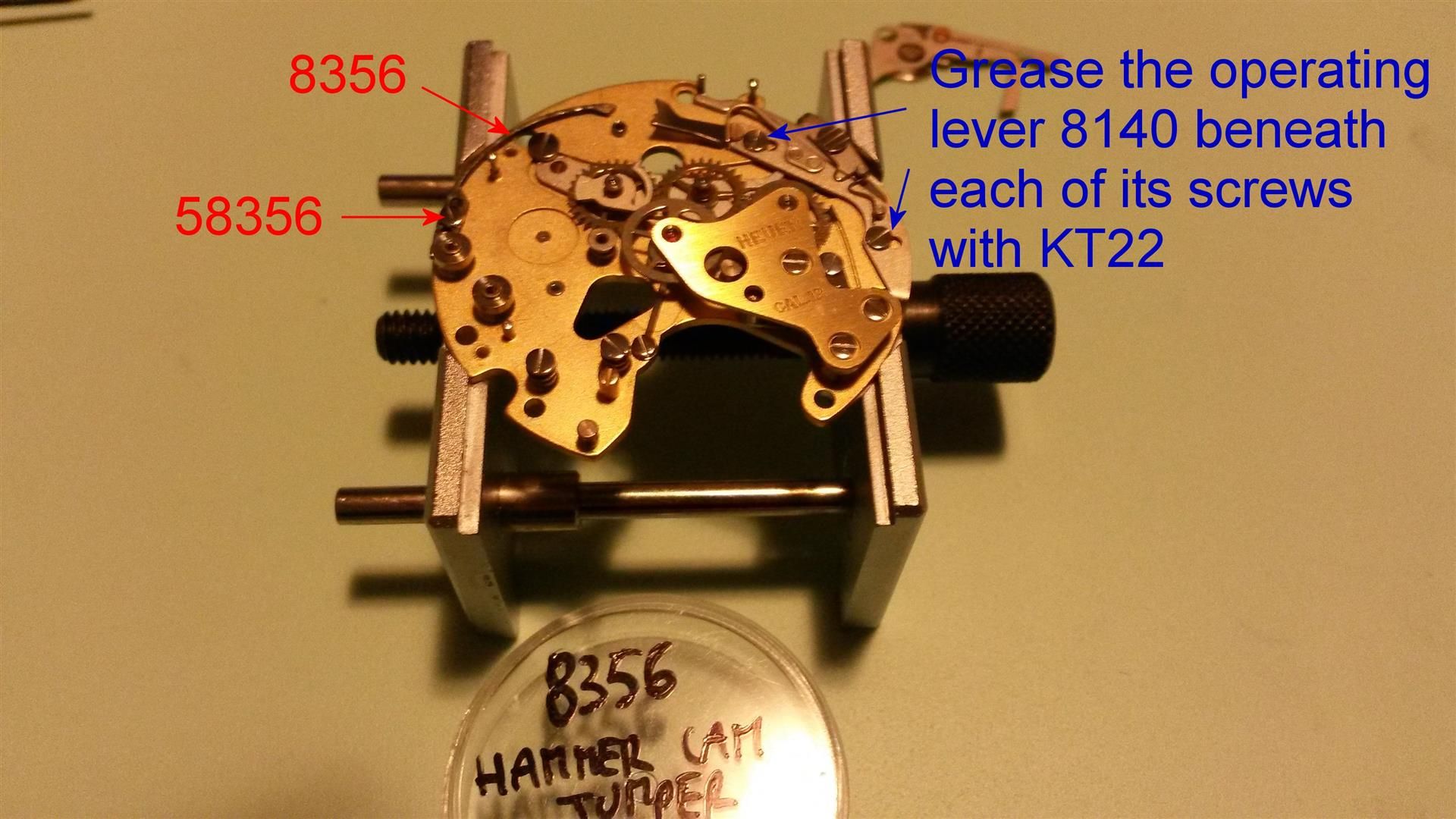
: 15) Secure the hammer 8220 using the screw 58220 (gently open the
: hammer cam jumper 8356 during the operation), then oil the
: bearing of the hammer 8220 (probably is better to put a drop of
: oil around the bearing before put the screw in order not to
: spread the oil around the hammer screw hole).
: Then replace the hour hammer 8680 (the one which resets the hour
: recorder small hand) and its safety screw 58680, leaving its
: spring free (I prefer instead to immediately tension the spring
: but is essential NOT to move the 8220 from the open position in
: order to leave the hour hammer open), then oil its pivot (like
: above, if you have the parts dismounted probably is better to
: put a drop of oil on the pivot before fitting the part).
: Oil also the surface of the hammer to avoid friction when beating
: on the heart cam of the wheel 8631 (see further):
:
: 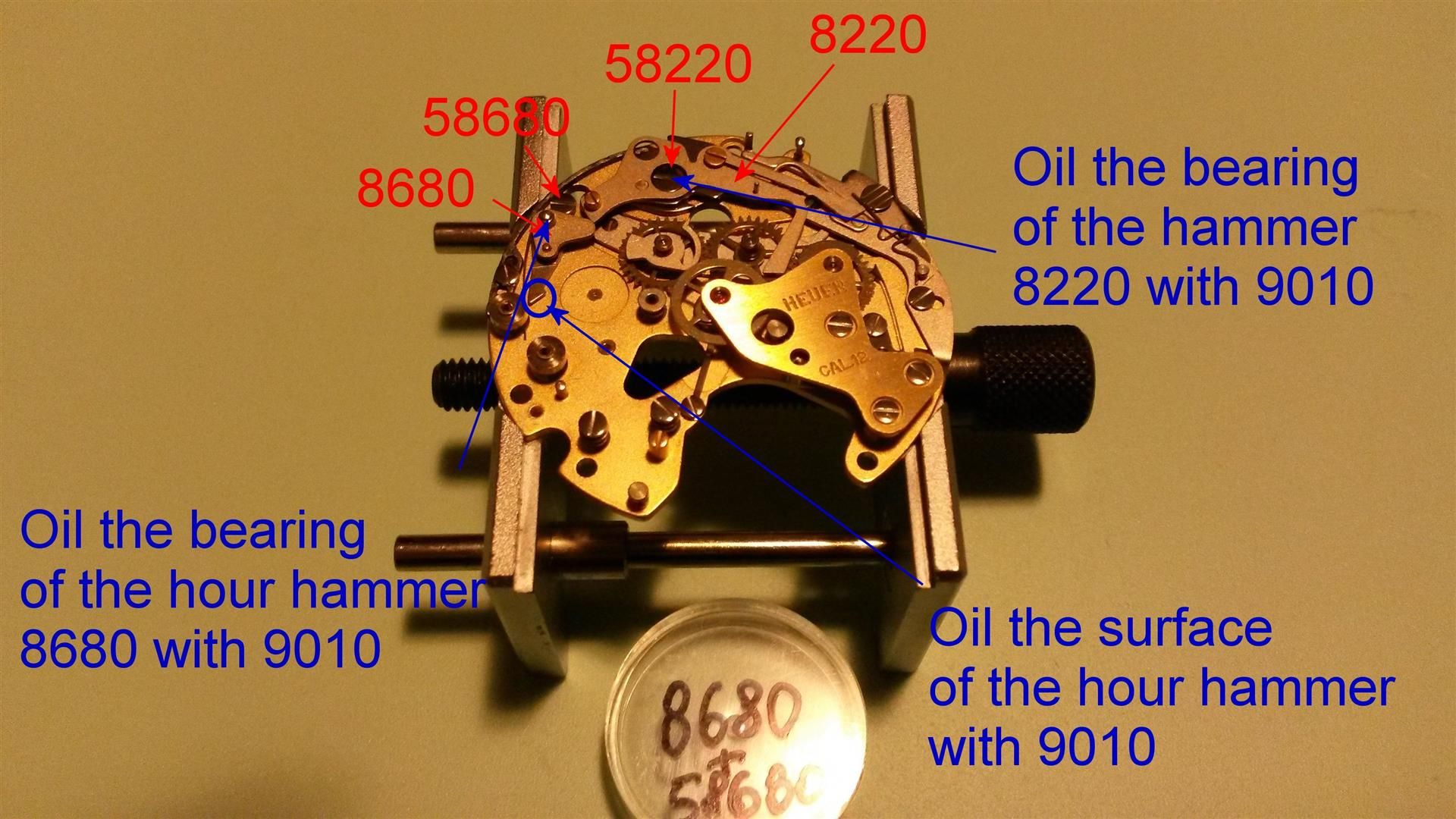
: 16) Grease with KT22 the hammer 8220 at the following rubbing
: points:
: - with the hammer cam jumper 8356 (this is essential to have a poor
: friction = smooth movement of the pushers when start / stop /
: reset, you will have to move the hammer 8220 to reach all the
: grooves to be greased and this is the reason why is better to
: position the spring of the hour hammer 8680 after this step);
: - with the hour hammer 8680;
: - with the fly-back lever 8180;
:
: 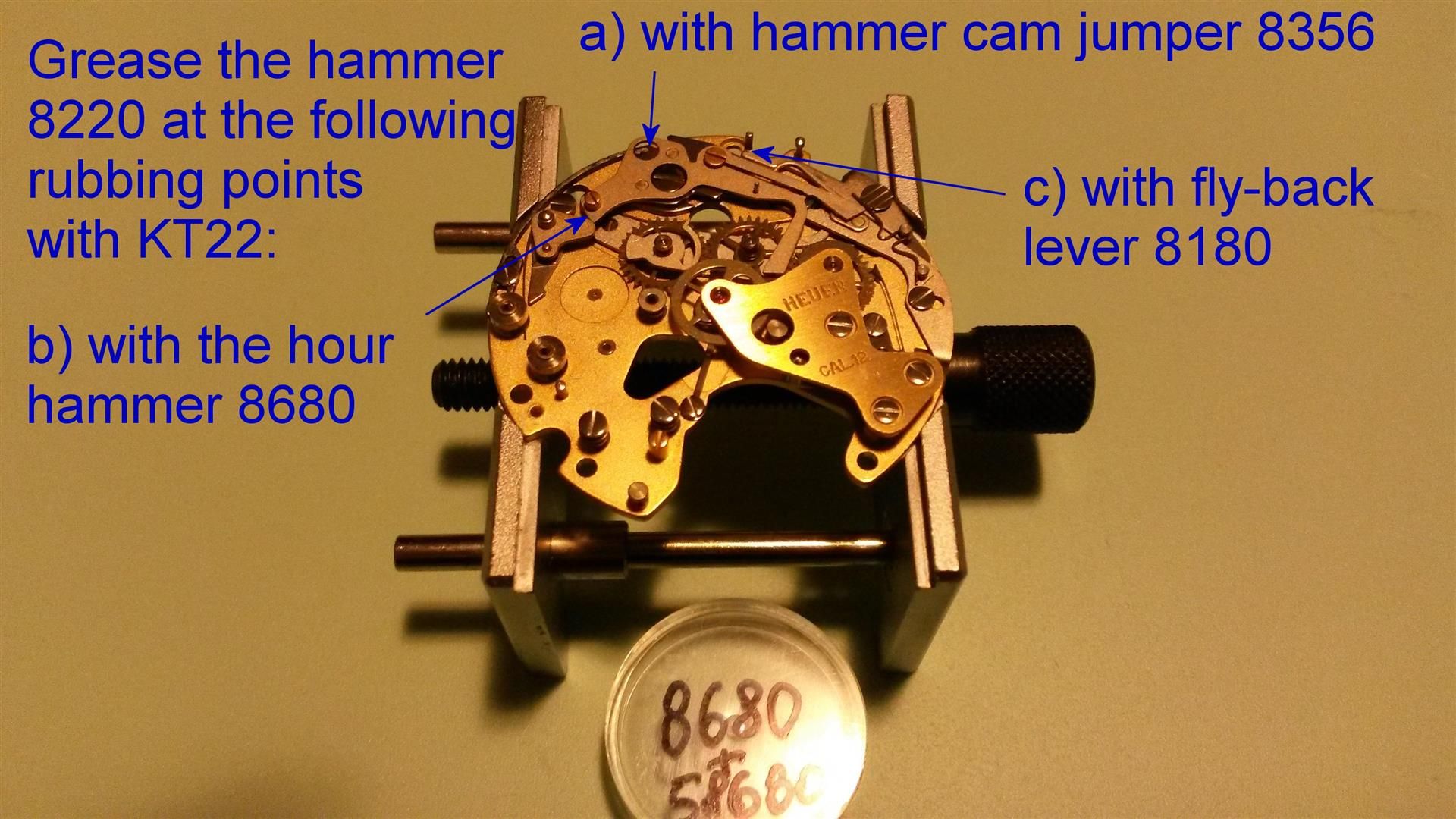
: 17) Replace the connecting wheel for hour recorder 8631 (beware:
: NOT to move the hammer 8220 for obvious reasons):
:
: 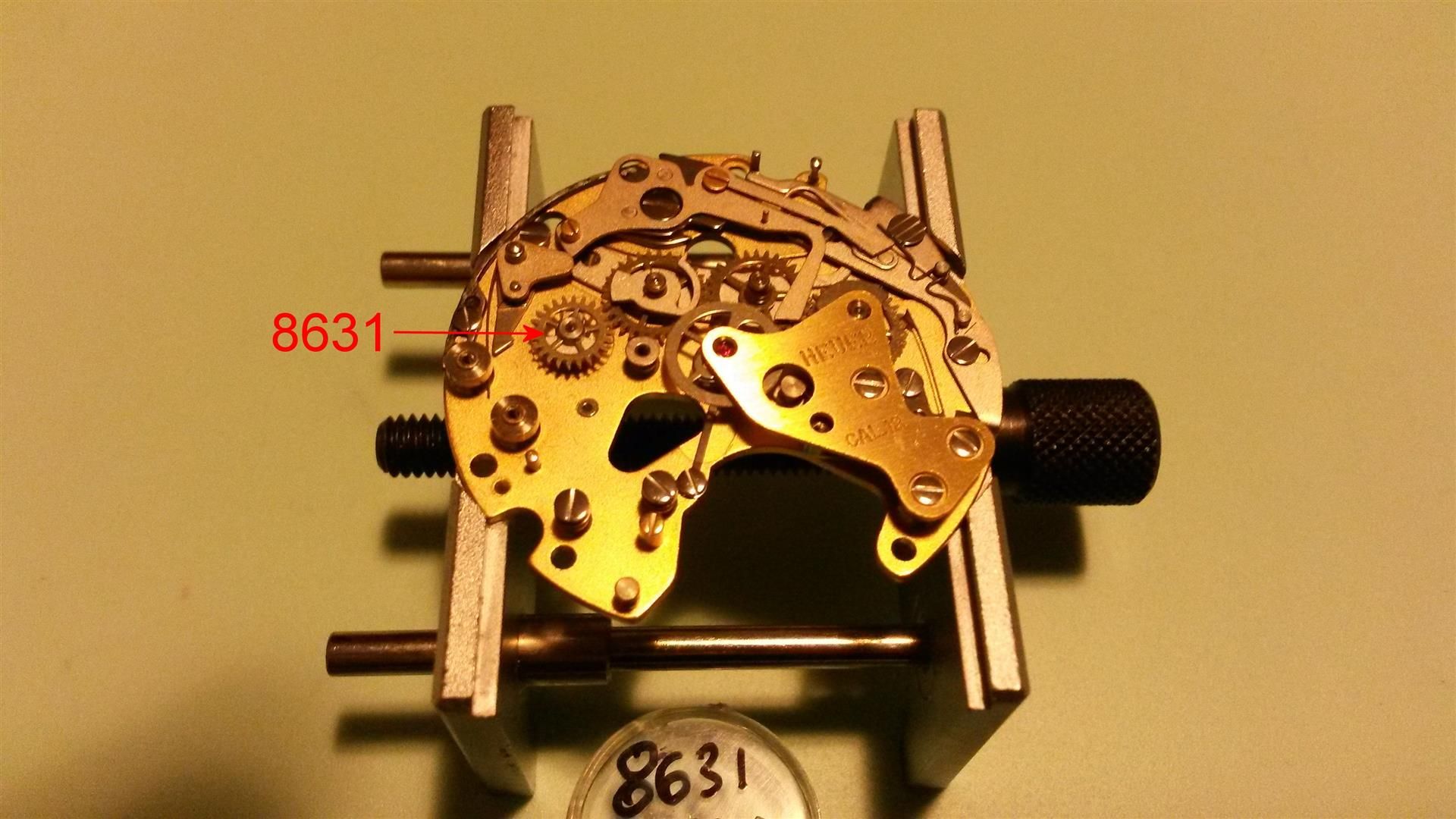
: 18) Replace the hour recorder jumper rest (is the thicker one)
: 8707, flat side up, and the hour recorder jumper 8705 (is the
: thicker one too, this is 0.50mm height while the 8270 is 0.42mm)
: and secure them with the screw 58705. I prefer to replace the
: jumper 8707 BEFORE replacing its wheel while the manual suggests
: the opposite, for me is easier as the jumper will help the hour
: recorder wheel to stay in place pressed towards the 8631 and
: thus facilitating the mounting of the bridge):
:
: 
: 19) Replace the hour recorder wheel 8601. If not already done this
: is the moment to put in place the spring of the hour hammer:
:
: 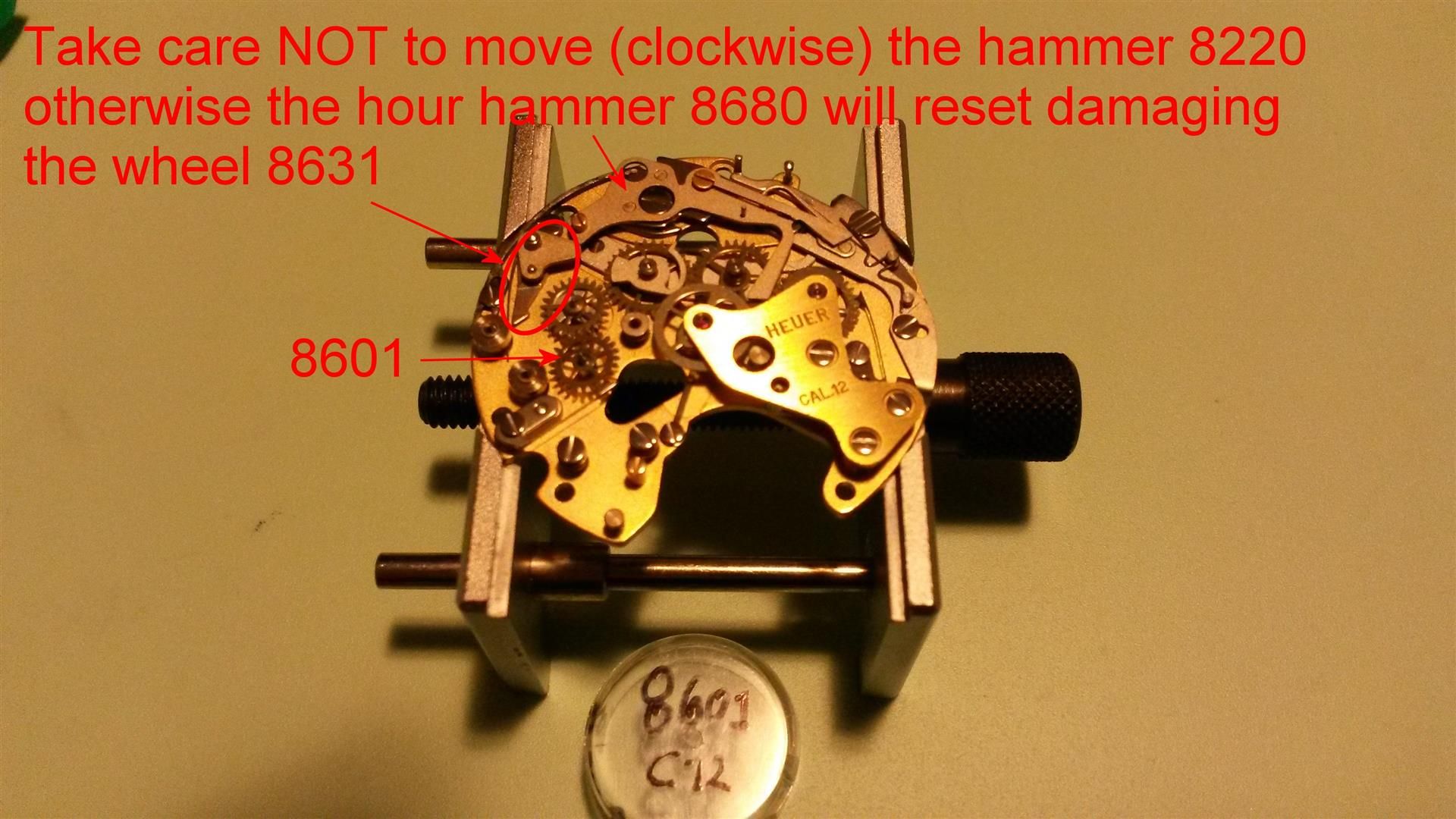
: 20) Replace the hour recorder bridge 8620 and its two screws 58620:
:
: 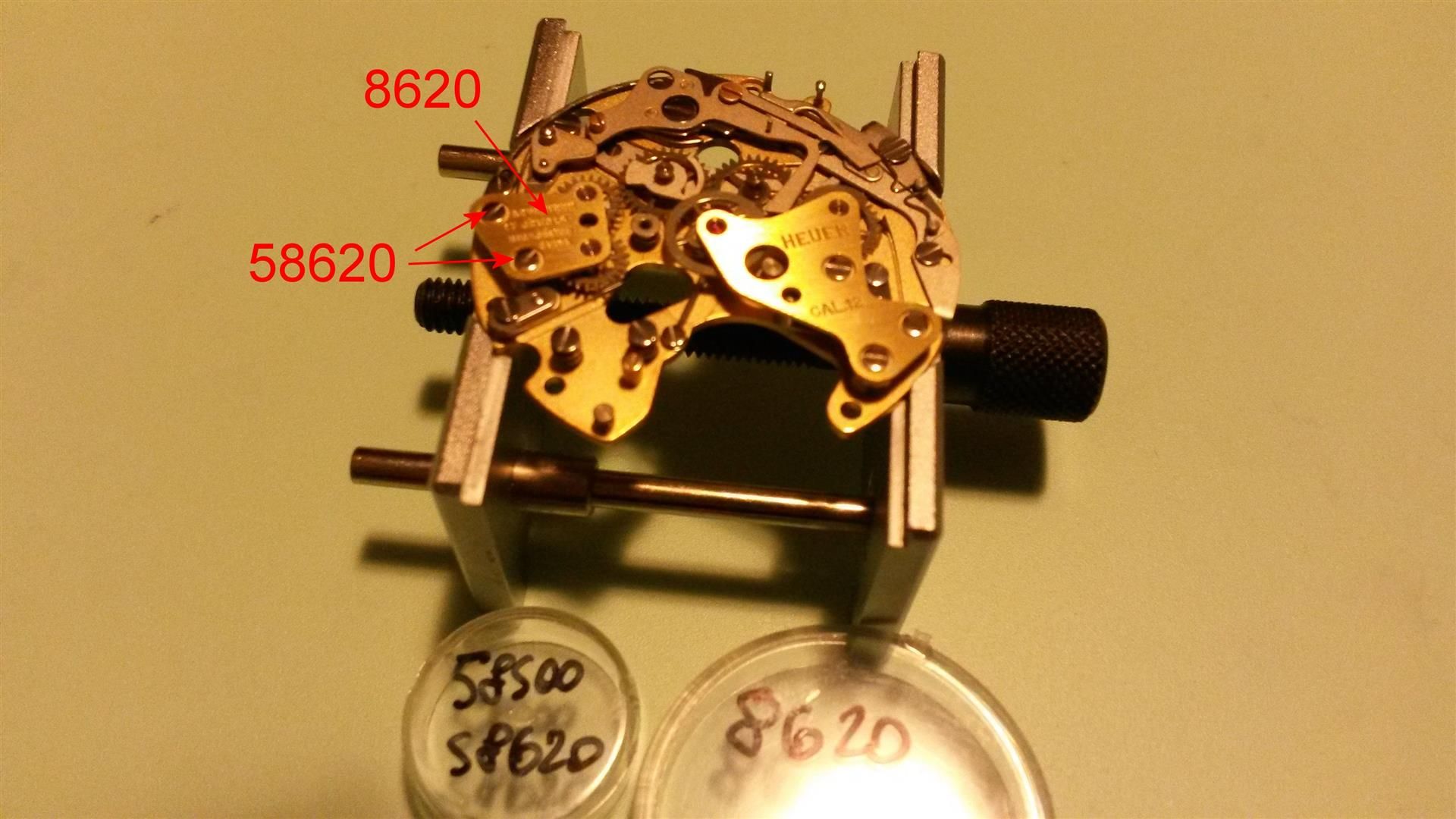
: 21) Replace the coupling clutch spring (for oscillating pinion)
: 8323, then oil both the surfaces of the hammer 8220 (essential
: to avoid rubbing when the hammer beats on the heart cams of the
: wheels 8000 and 8020):
:
: 
: 22) Replace the coupling clutch unit 8079/1 with its fixing screw
: 58079/1 and check that it moves freely stopping between the two
: other screws 58079/1 (the first ones replaced at the beginning
: of the reassembling procedure):
:
: 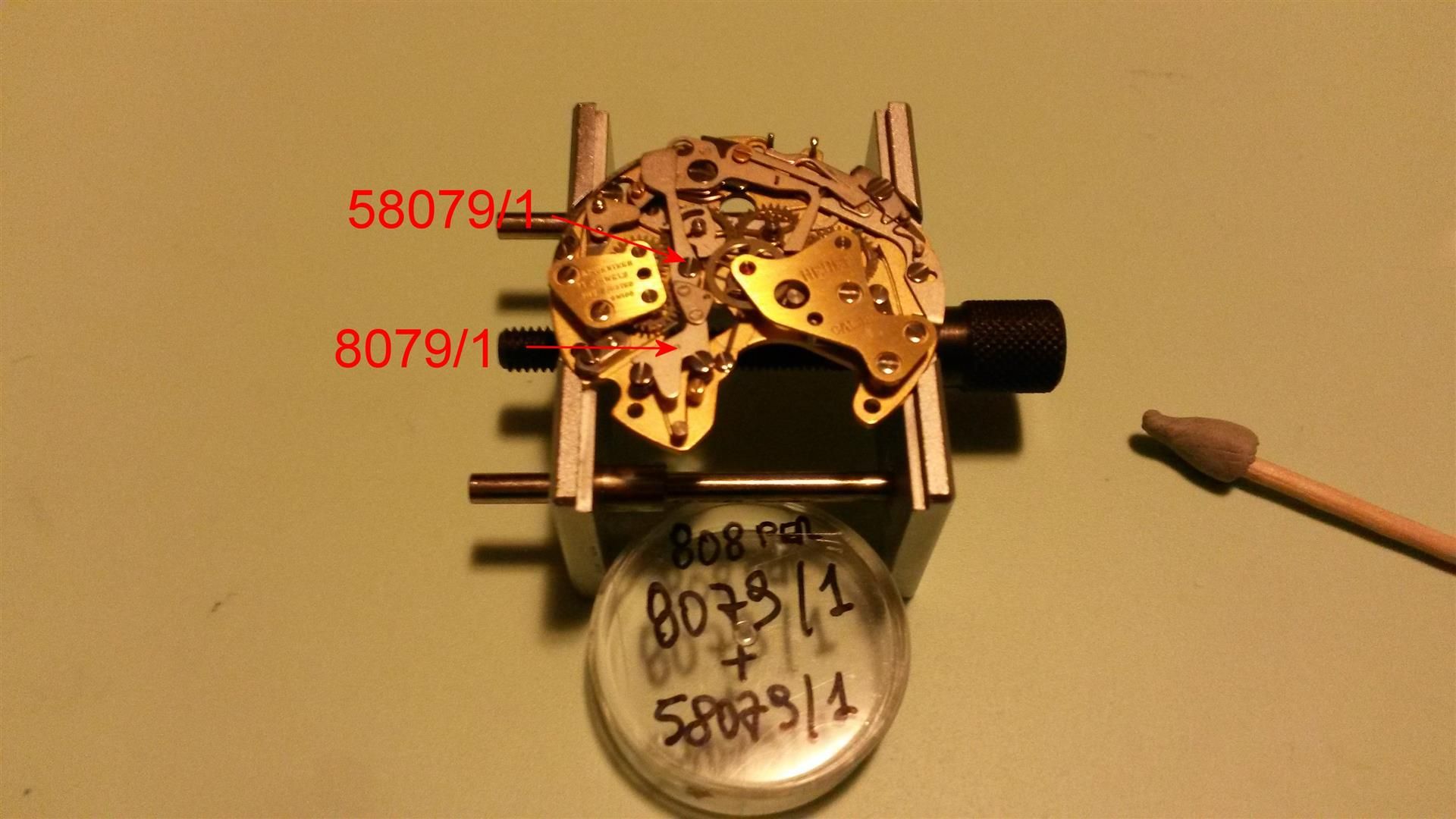
: 23) Now you can position the spring 8323 on the pin located on the
: bottom side of the coupling clutch 8079/1 in order to tension
: the coupling clutch in the rest position (when the chronograph
: is disengaged the oscillating pinion 8086 spins freely not
: engaging the chronograph central runner 8000, the travel done
: from the oscillating pinion - that is its penetration into the
: teeth of the 8000 wheel - is regulated by the golden eccentric
: located below one of the screws 58079/1).
: Then remove the chronograph bridge 8500 and position the blocking
: lever 8200 and its screw 58200, then replace the bridge 8500 and
: secure firmly its three screws.
: The blocking lever 8200 has the function to block the chronograph
: wheel 8000 (and thus the central second hand) during the stop
: phase and when the chrono is disengaged, but must free the wheel
: 8000 during the chrono running and reset phases, so verify the
: tension of the blocking lever 8200 in the stopped position of
: the chronograph passing the extremity of the blocking lever
: spring over its stop pin. Bear in mind that:
: - an excessive tension can damage the fine teeth of the chronograph
: runner 8000;
: - never turn by hand the chronograph runner 8000 while the blocking
: lever is in its stop position (that is pressed) for the reason
: above.
: Lastly grease the blocking lever 8200 at the rubbing points:
: - with the hammer pin 8220;
: - with the beak of the fly-back lever 8180.
:
: 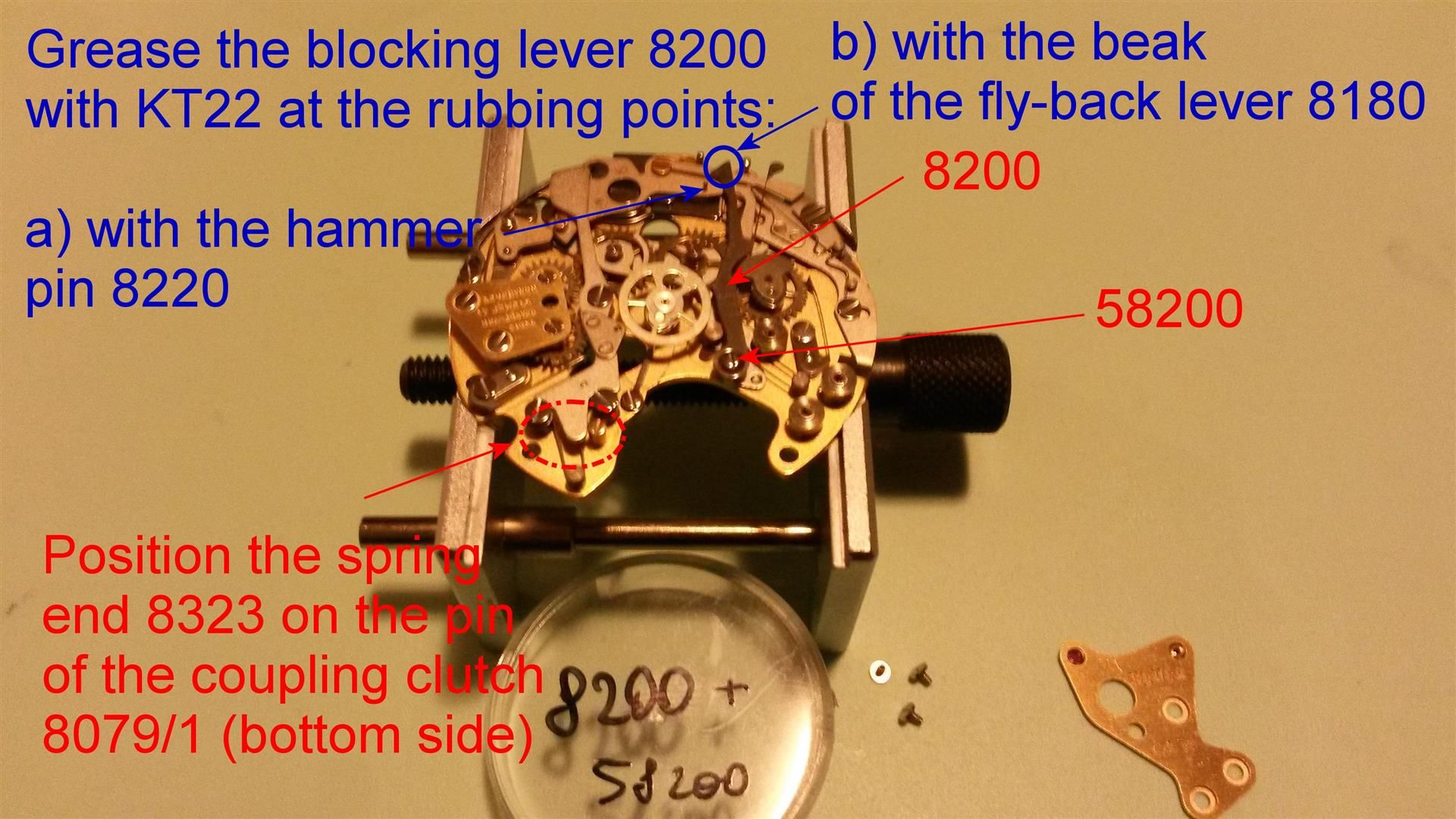
: 24) Now the chronograph module is completely assembled, so you can
: oil with 9010 the upper pivots of the wheels 8000 (chrono
: seconds), 8020 (minute recorder), 8601 (hour recorder), 8631
: (connecting wheel).
: After having replaced the chronograph module on the basic movement
: (don’t forget to oil the lower jewel of the oscillating pinion
: 8086 with oil 9010 and replace the oscillating pinion too) and
: secured it with the three blue screws 58510 don’t forget to
: oil also the upper bearing of the oscillating pinion (very
: important: the oscillating pinion always spins despite the
: chronograph is engaged or not, so if not lubricated can wear out
: prematurely and this is a really expensive and hard-to-find
: spare part nowadays):
:
: 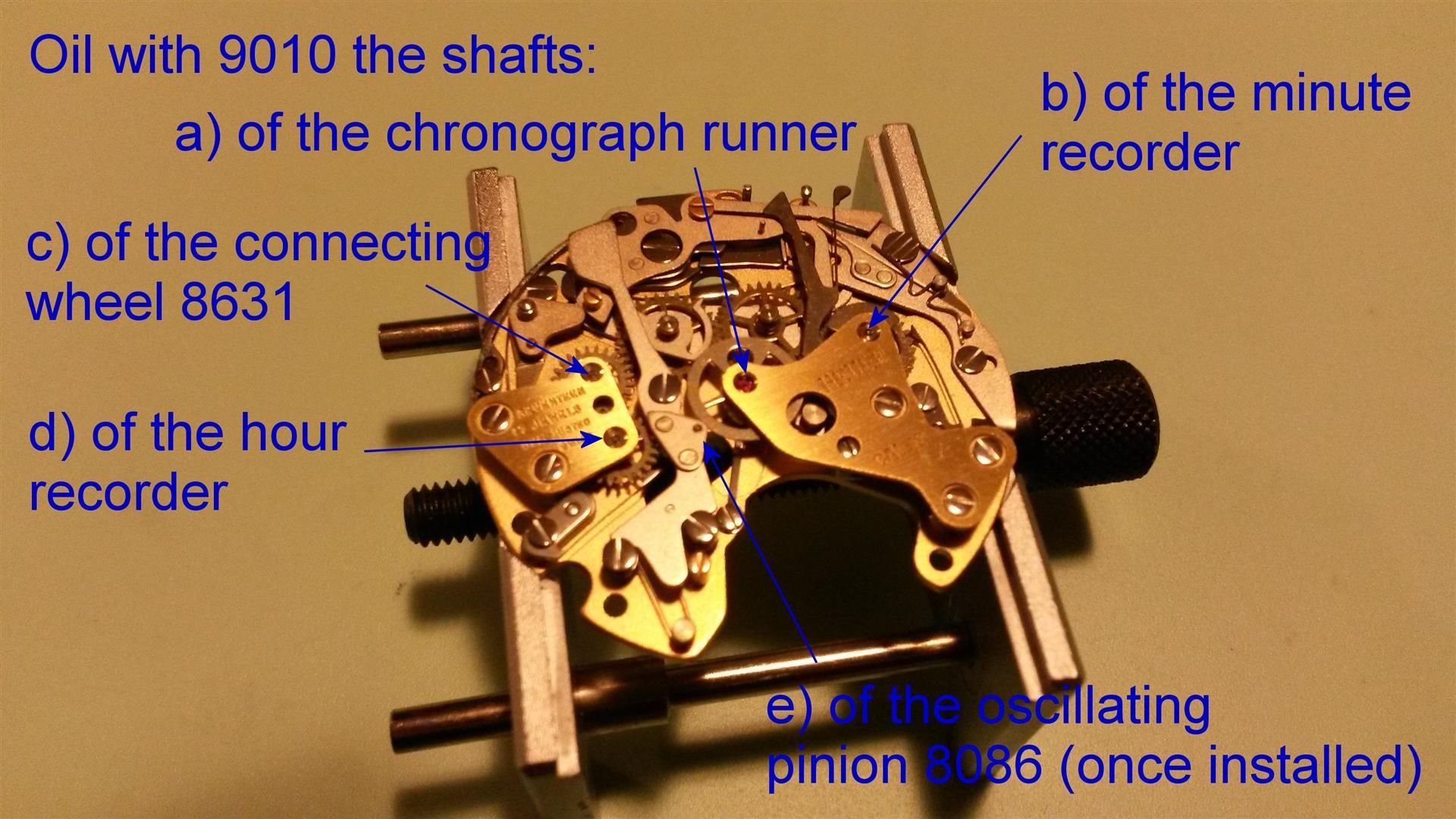
: 25) Even if the manual doesn’t suggest to oil any point on the
: lower side of the chronograph module I usually put a tiny drop
: of 9010 also on the following points, even if this is less
: important because the three shafts of the three chrono wheels
: will pass through the basic movement (the 8020 through the
: microrotor hollow arbor, the 8000 through the center pipe 163/1
: where the minute hand spins) so there will be other rubbing
: points to be lubricated on the basic movement too.
:
: 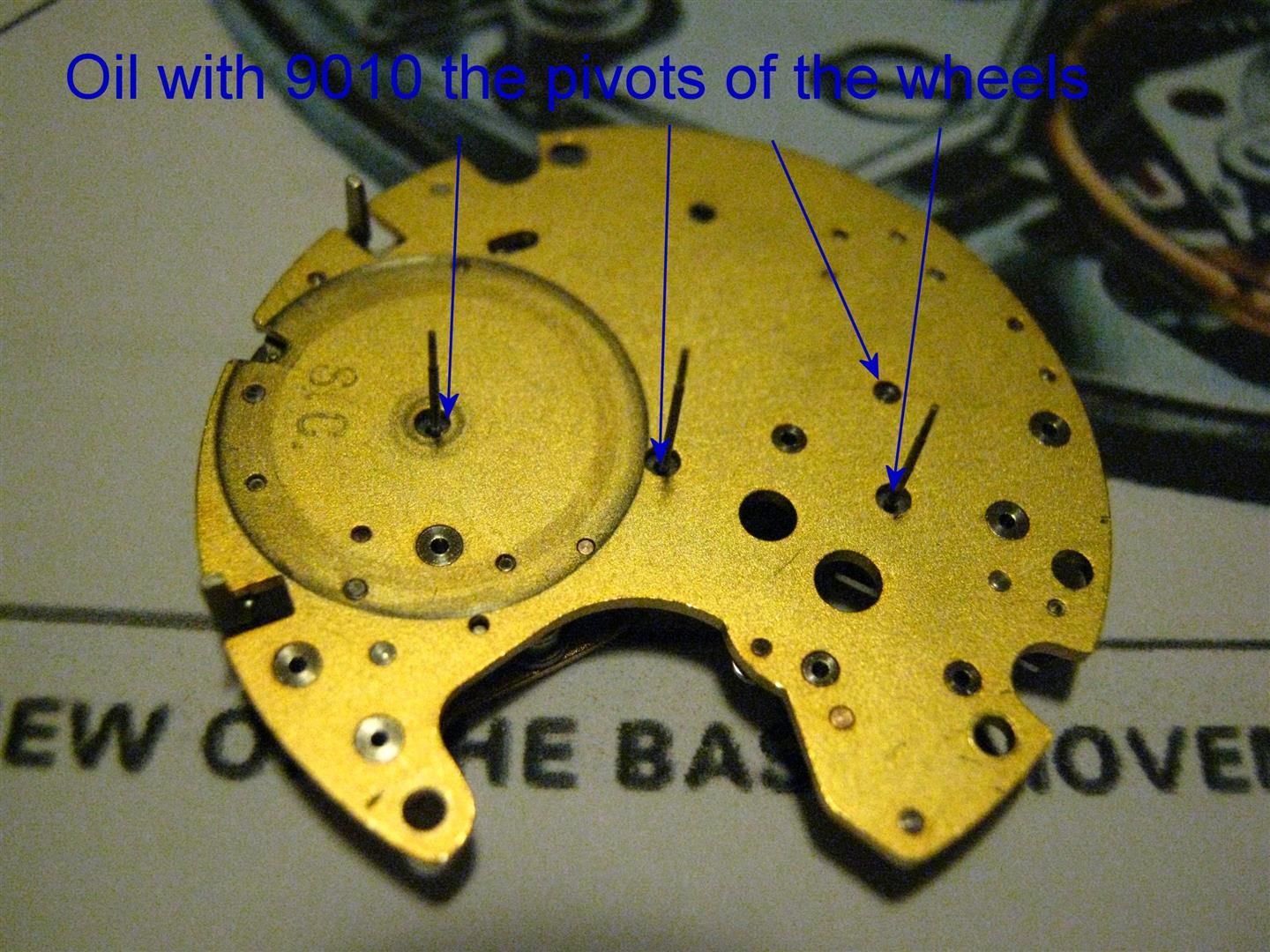
: Hope you enjoyed if you arrived until here :-)
: Gianluca
| Chronocentric and zOwie site design and contents (c) Copyright 1998-2005, Derek Ziglar; Copyright 2005-2008, Jeffrey M. Stein. All rights reserved. Use of this web site constitutes acceptance of the terms of use. | CONTACT | TERMS OF USE | TRANSLATE |